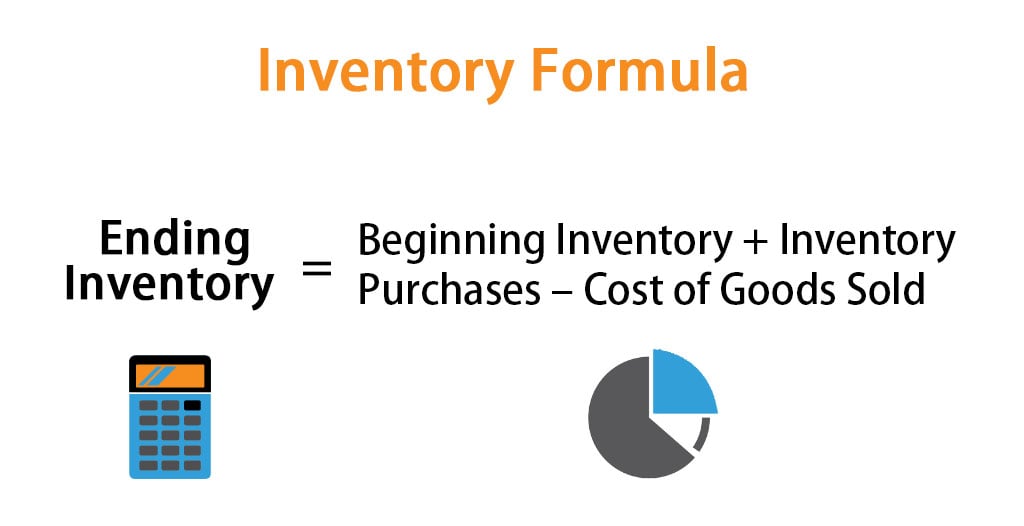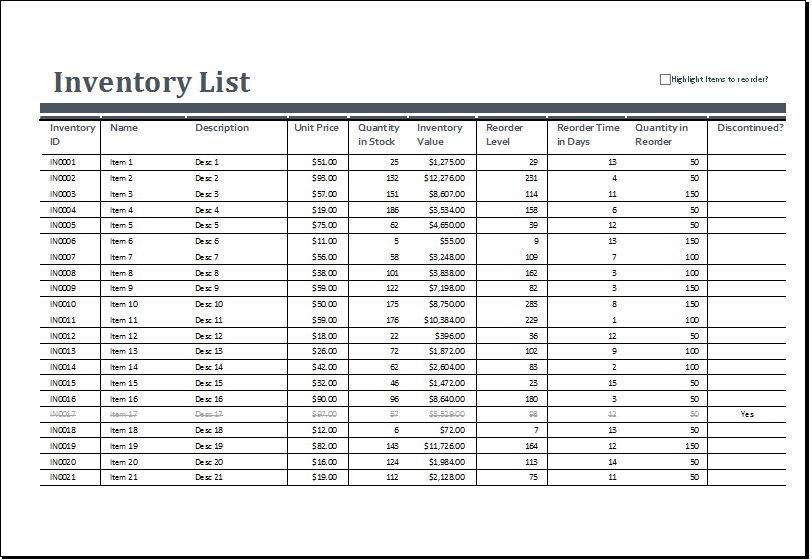In the ever-evolving landscape of business, the business inventory calculator emerges as an indispensable tool for optimizing inventory levels, ensuring accurate valuations, and streamlining inventory management. Its capabilities extend far beyond mere calculations, offering businesses a comprehensive solution for inventory optimization and control.
Delving into the intricacies of inventory management, this guide unravels the multifaceted role of business inventory calculators, empowering businesses with the knowledge and strategies to harness its full potential.
Business Inventory Calculator Overview

A business inventory calculator is a valuable tool that helps businesses manage their inventory efficiently. It allows them to track the quantity of products on hand, calculate the cost of goods sold, and make informed decisions about inventory levels.
There are several types of inventory calculators available, each with its own set of features. Some calculators are simple spreadsheets that allow businesses to manually enter inventory data. Others are more sophisticated software programs that can integrate with other business systems, such as accounting software or point-of-sale systems.
Benefits of Using a Business Inventory Calculator
- Improved inventory accuracy
- Reduced costs
- Increased sales
- Improved customer service
How Businesses Can Utilize Inventory Calculators
Businesses can use inventory calculators in a variety of ways, including:
- Tracking inventory levels
- Calculating the cost of goods sold
- Making informed decisions about inventory levels
- Identifying trends in inventory levels
- Forecasting future inventory needs
Inventory Management and Optimization: Business Inventory Calculator

Inventory calculators play a crucial role in optimizing inventory levels, ensuring businesses maintain adequate stock to meet customer demand without overstocking and incurring unnecessary costs.
These calculators employ various methods to determine optimal inventory levels, including the Economic Order Quantity (EOQ) formula, which considers factors such as demand, ordering costs, and holding costs.
Calculating Optimal Inventory Levels
To calculate optimal inventory levels using a calculator, businesses need to input relevant data, such as:
- Average daily demand
- Ordering cost per order
- Holding cost per unit per year
The calculator then uses these inputs to determine the optimal order quantity, which is the quantity that minimizes the total inventory costs.
Forecasting Demand and Managing Stock Levels, Business inventory calculator
Inventory calculators can also assist businesses in forecasting demand and managing stock levels effectively.
By analyzing historical data and incorporating demand forecasting techniques, these calculators can predict future demand patterns.
This information enables businesses to adjust their inventory levels accordingly, ensuring they have sufficient stock to meet anticipated demand while avoiding overstocking.
Inventory Valuation and Costing
Inventory valuation is the process of determining the value of a company’s inventory. This is important for financial reporting purposes, as well as for making decisions about inventory management. Inventory calculators can assist in valuing inventory using different methods, such as FIFO, LIFO, and weighted average.
FIFO (First-In, First-Out) assumes that the oldest inventory is sold first. LIFO (Last-In, First-Out) assumes that the newest inventory is sold first. Weighted average assumes that all inventory is sold at an average cost. The choice of which method to use depends on the company’s specific circumstances.
Importance of Accurate Inventory Valuation
Accurate inventory valuation is important for financial reporting purposes. This is because inventory is a major asset for many companies, and its value can have a significant impact on the company’s financial statements. Inaccurate inventory valuation can lead to incorrect financial reporting, which can have a number of negative consequences, such as:
- Misleading investors and creditors
- Making it difficult to make sound financial decisions
- Violating accounting standards
Determining Inventory Carrying Costs
Inventory carrying costs are the costs associated with holding inventory. These costs include storage, insurance, and opportunity cost. Inventory calculators can help businesses determine inventory carrying costs by providing information about the average inventory balance and the cost of holding inventory.
By understanding inventory carrying costs, businesses can make informed decisions about how much inventory to hold. Holding too much inventory can lead to increased costs, while holding too little inventory can lead to stockouts and lost sales.
Inventory Tracking and Control
Inventory calculators play a crucial role in tracking inventory movements, providing real-time visibility into stock levels and transactions. By leveraging advanced algorithms, these calculators automate the process of recording inventory additions, withdrawals, and adjustments, ensuring accuracy and minimizing the risk of errors.
Inventory Discrepancy Identification
Inventory calculators help businesses identify discrepancies between physical inventory counts and system records. By comparing actual on-hand quantities with recorded inventory levels, these tools can pinpoint discrepancies that may indicate theft, damage, or other forms of shrinkage. This enables businesses to take prompt corrective actions, reducing losses and maintaining inventory accuracy.
Inventory Control System Implementation
Inventory calculators facilitate the implementation of effective inventory control systems. By providing real-time inventory data, these tools enable businesses to establish minimum and maximum stock levels, set reorder points, and optimize inventory replenishment schedules. This helps prevent overstocking and understocking, ensuring optimal inventory levels that meet customer demand while minimizing holding costs.
Integration with Business Systems
Integrating inventory calculators with other business systems, such as enterprise resource planning (ERP) or accounting software, can significantly enhance business operations and streamline inventory management. This integration provides numerous benefits, including:
- Centralized Data and Real-Time Visibility:Integrating inventory calculators with business systems allows for the consolidation of inventory data in a single, centralized location. This provides a real-time view of inventory levels, eliminating the risk of data discrepancies and improving decision-making.
- Automated Inventory Updates:Integration enables automatic updates of inventory levels based on transactions processed in the ERP or accounting system. This eliminates the need for manual data entry, reducing the risk of errors and improving efficiency.
- Improved Inventory Planning:The integration of inventory calculators with business systems facilitates the analysis of historical data, demand patterns, and sales forecasts. This data can be leveraged to optimize inventory levels, minimize stockouts, and reduce carrying costs.
- Enhanced Collaboration:Integration enables different departments within an organization to access and share inventory information seamlessly. This improves communication, reduces errors, and facilitates cross-functional collaboration.
However, integrating inventory calculators with business systems also poses certain challenges and considerations:
- Data Compatibility:Ensuring compatibility between the data formats and structures of the inventory calculator and the business systems is crucial. This requires careful planning and data mapping to avoid data inconsistencies.
- System Complexity:The integration of multiple systems can increase the overall complexity of the IT infrastructure. This requires proper planning, testing, and ongoing maintenance to ensure seamless operation.
- Security Considerations:Integrating inventory calculators with business systems introduces additional security risks. It is essential to implement robust security measures to protect sensitive inventory data from unauthorized access or breaches.
Despite these challenges, the successful integration of inventory calculators with business systems has yielded significant benefits for organizations. For example, a manufacturing company integrated its inventory calculator with its ERP system, resulting in:
- Reduced Inventory Costs:Optimized inventory levels led to a 15% reduction in carrying costs.
- Improved Customer Service:Real-time inventory visibility improved order fulfillment accuracy, resulting in a 10% increase in customer satisfaction.
- Increased Operational Efficiency:Automated inventory updates eliminated manual data entry, saving over 200 hours per month.
Overall, integrating inventory calculators with business systems can streamline inventory management processes, improve data accuracy, enhance collaboration, and optimize inventory levels. By addressing the challenges and considerations involved, organizations can harness the benefits of integration to improve their overall business operations.
Closing Notes
As we conclude our exploration of business inventory calculators, it becomes evident that these tools are not mere software applications but rather strategic partners in inventory management. Their ability to optimize inventory levels, ensure accurate valuations, and streamline inventory control positions them as essential assets for businesses seeking to maximize efficiency, minimize costs, and gain a competitive edge.
FAQ
What are the key benefits of using a business inventory calculator?
Business inventory calculators offer numerous benefits, including optimizing inventory levels, reducing carrying costs, improving inventory accuracy, and streamlining inventory management processes.
How can inventory calculators help businesses optimize inventory levels?
Inventory calculators provide businesses with insights into their inventory data, enabling them to identify optimal inventory levels, minimize stockouts, and reduce overstocking.
What are the different inventory valuation methods supported by business inventory calculators?
Business inventory calculators typically support various inventory valuation methods, such as FIFO (First-In, First-Out), LIFO (Last-In, First-Out), and weighted average cost.
